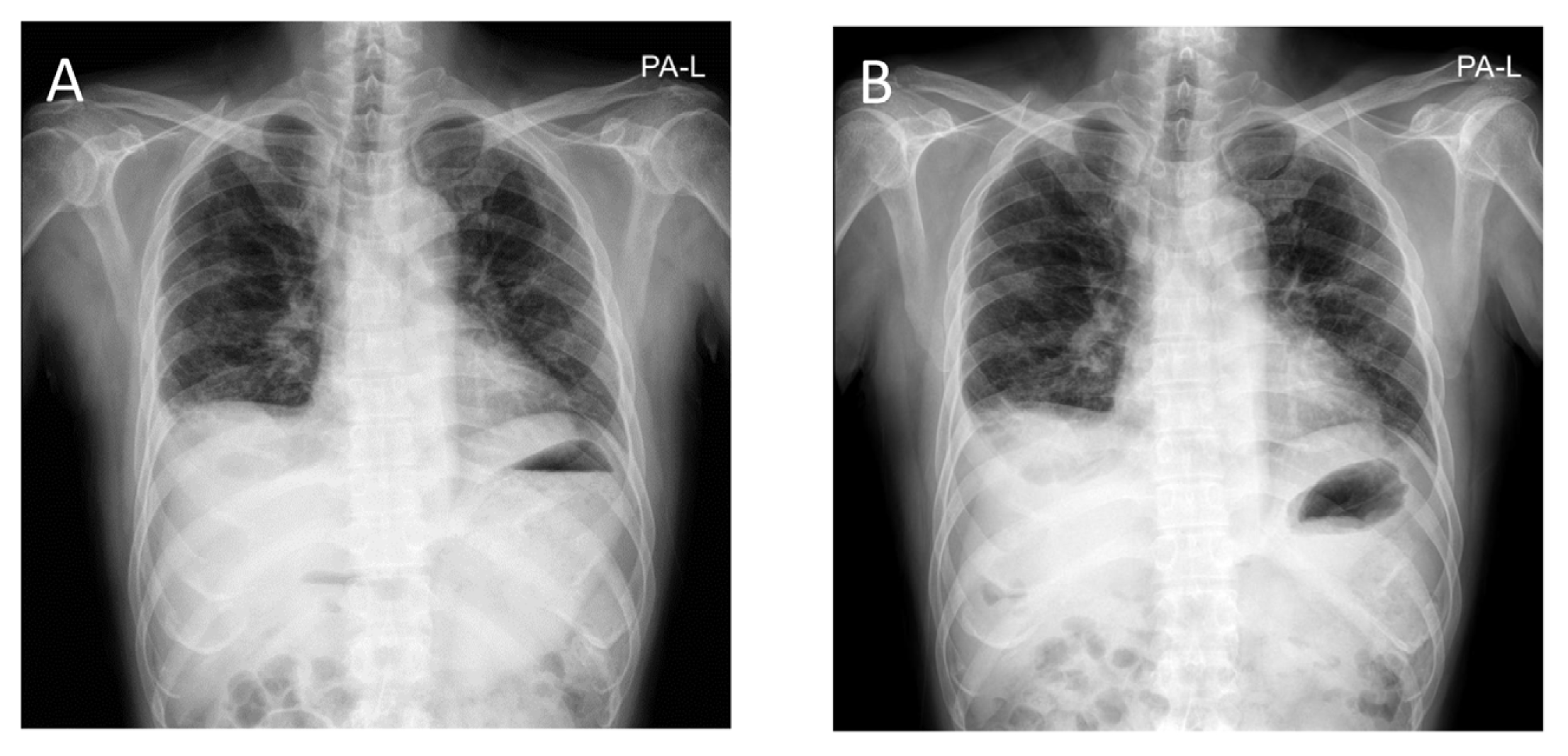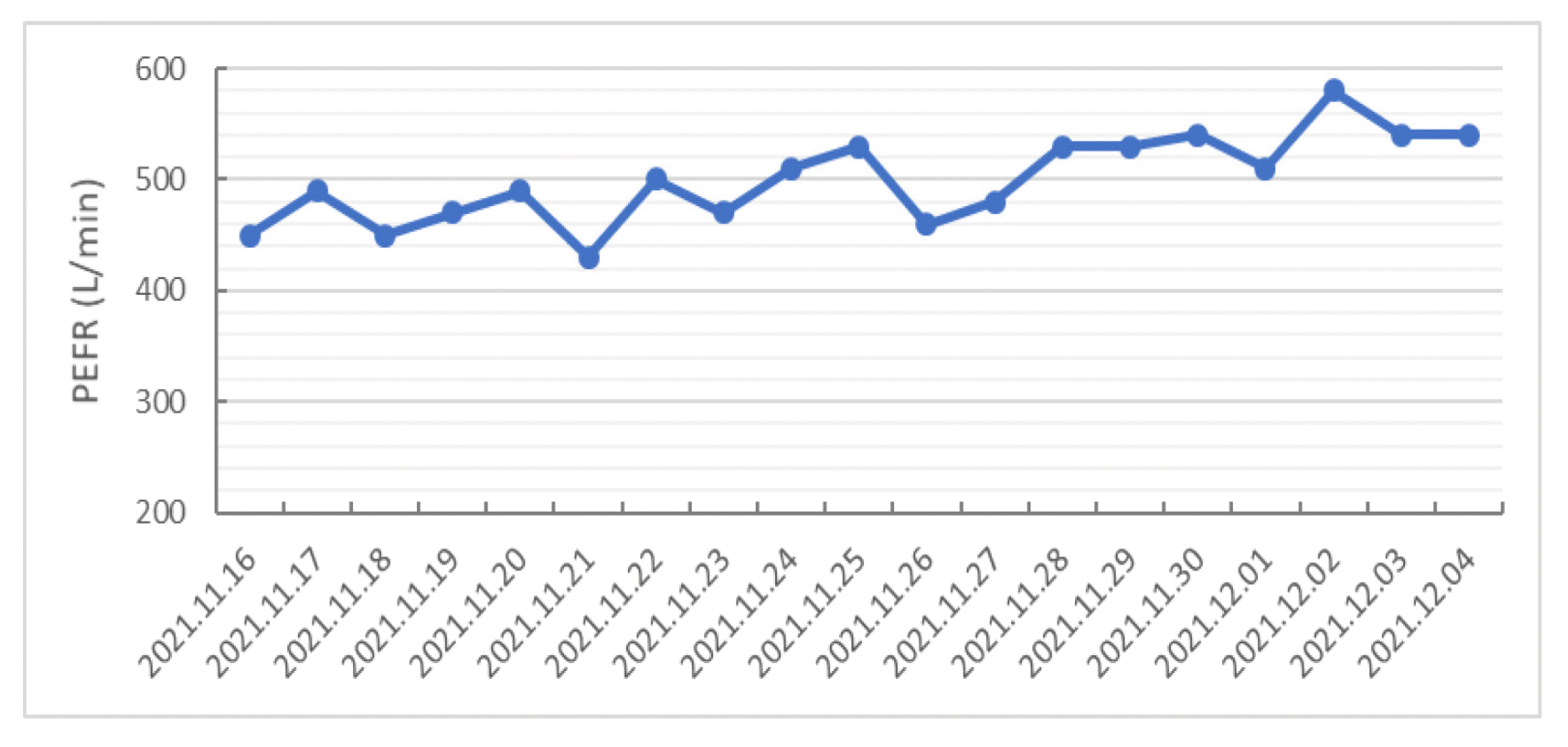References
2. SeyedAlinaghi S, Afsahi AM, MohsseniPour M, Behnezhad F, Salehi MA, Barzegary A, et al. 2021;Late complications of covid-19; a systematic review of current evidence. Archives of academic emergency medicine 9(1)
3. Kim D-s, Chu H, Min BK, Moon Y, Park S, Kim K, et al. 2020;Telemedicine center of korean medicine for treating patients with covid-19: A retrospective analysis. Integrative medicine research 9(3):100492.
4. Lee S, Park J, Lee Y-j, Kim S-h, Lee J. 2021;A case report of taeeumin with post covid-19 syndrome. Journal of Sasang Constitutional Medicine 33(4):32–42.
5. Fletcher CM, Elmes PC, Fairbairn AS, Wood CH. 1959;Significance of respiratory symptoms and the diagnosis of chronic bronchitis in a working population. British medical journal 2(5147):257.
6. Puhan MA, Mador M, Held U, Goldstein R, Guyatt G, Schünemann H. 2008;Interpretation of treatment changes in 6-minute walk distance in patients with copd. European Respiratory Journal 32(3):637–643.
7. Gibson PG. 2002;Outpatient monitoring of asthma. Current Opinion in Allergy and Clinical Immunology 2(3):161–166.
8. Jones P, Quirk F, Baveystock C. 1991;The st george’s respiratory questionnaire. Respiratory medicine 85(25–31)discussion 33.
9. Moreno-Pérez O, Merino E, Leon-Ramirez J-M, Andres M, Ramos JM, Arenas-Jiménez J, et al. 2021;Post-acute covid-19 syndrome. Incidence and risk factors: A mediterranean cohort study. Journal of Infection 82(3):378–383.
10. Nalbandian A, Sehgal K, Gupta A, Madhavan MV, McGroder C, Stevens JS, et al. 2021;Post-acute covid-19 syndrome. Nature medicine 27(4):601–615.
11. Carfì A, Bernabei R, Landi F. 2020;Persistent symptoms in patients after acute covid-19. Jama 324(6):603–605.
12. Garrigues E, Janvier P, Kherabi Y, Le Bot A, Hamon A, Gouze H, et al. 2020;Post-discharge persistent symptoms and health-related quality of life after hospitalization for covid-19. Journal of Infection 81(6):e4–e6.
13. Halpin SJ, McIvor C, Whyatt G, Adams A, Harvey O, McLean L, et al. 2021;Postdischarge symptoms and rehabilitation needs in survivors of covid-19 infection: A cross-sectional evaluation. Journal of medical virology 93(2):1013–1022.
14. Chopra V, Flanders SA, O’Malley M, Malani AN, Prescott HC. 2021;Sixty-day outcomes among patients hospitalized with covid-19. Annals of Internal Medicine 174(4):576–578.
15. Lee K, Jeong S, Jeong M, Choi Y, Song M, Jang I. 2021;Review on herbal medicine treatment for late complications of covid-19 patients. The Journal of Internal Korean Medicine 42(1):53–66.
16. Lee SW, Park JJ, Lyu YR, Lee EJ, Kim SY, Kang W, et al. 2022;The effect of lung-conduction exercise in chronic obstructive pulmonary disease: Randomized, assessor-blind, multicenter pilot trial. Medicine 101(3)
17. Kim TH, Lee SW, Lyu YR, Lee EJ, Jung IC, Park YC. 2020;Chronic obstructive pulmonary disease patients treated with korean medicine pulmonary rehabilitation: Two case reports. The Journal of Korean Medicine 41(3):162–172.
18. Ferrer M, Villasante C, Alonso J, Sobradillo V, Gabriel R, Vilagut G, et al. 2002;Interpretation of quality of life scores from the st george’s respiratory questionnaire. European Respiratory Journal 19(3):405–413.



